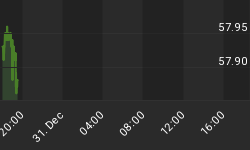5:00 am E-12 EU Commission GDP Forecasts. 8:30 CAN Merchandise Trade Balance (exp C$6.2 bln, prev C$6.3 bln), 8:30 am US Feb Trade Balance (exp -$66.0 bln, prev -$68.5 bln)
DATA ALERT: US February trade gap could undershoot forecasts -- a positive for the US dollar.
We expect the US trade gap to have stabilized by more than 3.0% to $66.0 bln in February from January's $67.8 bln, well below consensus forecast of $67.8 bln due to:
1) Chinese New Year-related closures slowing US demand for Chinese imports;
2) reported increase exports for US aircraft;
3) the 11% decline in February crude oil seen reducing the oil importing bill by 5-6%.
We do not rule out a trade figure below $66 bln, in which case it could trigger a positive knee-jerk reaction in the dollar, at a time when the majority of market players are expecting a figure of over $67.5 bln, which would be the third largest monthly trade gap on record.
Even a deficit figure under $67 bln (from January's record of $68.5 bln) could be dollar supportive, albeit not a durable gain. We could see a renewed retreat in the dollar after the initial rise (in the event of lower than expected number) as trades surmise the sharp oil price rebound will lead to a renewed deterioration in the March trade deficit.
EURUSD eyes $1.22 despite US deficit surprise
We see the single currency attempting to breach the 1.21765-70s and onto the 1.22 figure by mid NY morning in the event that we do see the one-off decline in US imports. But solid selling pressure standing at the figure, particularly ahead of Thursday's expected rebound in the Mar retail sales. EURUSD's momentum measures enter bullish territory as measured by the MACD signals point to an improvement towards the 1.2170s with key resistance at 1.22. Support starts at 1.2115 -- the 50% retracement of the 1.2588-1.1635 move. Key support stands at 1.2080.
USDJPY weakness seen targeting 117.50s
Yen rallied by nearly a full point (from 118.40 to 117.70) in Asian trade on a combination of pre-US trade deficit report jitters in the USD and an remarks from Bank of Japan Governor Fukui indicating he has no fixed preconceptions on when the zero interest rate policy should be ended. Fukui's increasing reference to a flexible BoJ vis-à-vis the fate of ZIRP is raising speculation that the first rate hike will happen as early as this quarter. With 10-year yields nearing the 2.00% level, the unwinding of the yen-carry trade could prove more aggressive than foreseen, especially as the unraveling of high-yielding trades is expected to take place in the second half of the year.
JPY is also being boosted by a report showing Japanese investors to have been net sellers in foreign securities, selling a net Y2.38 trillion, while foreign investors were net buyers in Japanese securities, acquiring a net Y1.67 trillion. It was the third consecutive month of net selling of foreign securities by Japanese investors. On a weekly basis, overseas investors were net buyers of Japanese stocks for all but one of the last 27 weeks ending on April 1.
USDJPY stabilizes around the 118.20s. We could see prolonged gains towards the 118.45-50 on any knee jerk dollar rise following the US deficit, but that would only draw offers with more conviction dragging back the pair towards the core of it range around 117.50-118. The downturn in the MACD signal suggests 117.80 could be breached in the US session. Support stands at the 100 day MA of 117.40.
Iran's standoff could extend through summer & beyond
Two weeks after the UN Security Council called on Iran to cease any uranium enrichment work, Iran said on Tuesday it had taken made major headway in acquiring nuclear technology, defying western demand to curb its nuclear ambitions. President Bush' reply that Tehran was moving in the wrong direction may sound like a threat, especially a few days after reports indicating the Bush administration is considering military strikes against Iran in order to pressure it to abandon its alleged nuclear development program, including a a possible major air attack on the country. Such belligerency explains oil's record close above the $70 pb yesterday. But it's worth pointing out that although the UN Security Council has moved relatively swiftly in producing a combined statement, it remains not a legally binding statement as it is signed by only the five permanent UN Security members as well as Germany. At the same time, Russia and China (both permanent members and worthy of veto) insist on excluding a clause referring to the Council's role in maintaining international peace and security on the grounds that it can justify sanctions and military action. Therefore, we expect the "war games" of words could potentially last into early summer since neither the US and UK are ready to take action alone, nor, China and Russia are likely to support any sanctions. The resulting rise in oil prices could therefore escalate and $80 cannot be ruled out by end of Q2.
















